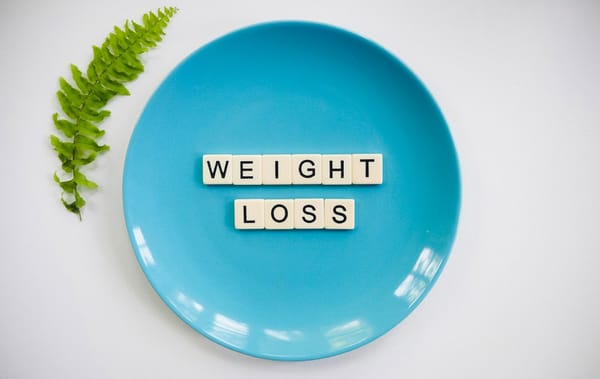Why Your TDEE Changes Over Time & When to Recalculate It?

Your Total Daily Energy Expenditure (TDEE) is among the most important calculations you'll ever do if you want to control your weight and reach certain fitness achievements. TDEE equals the total amount of calories your body burns in a day, from basic functions such as breathing and digestion to the most rigorous physical activity. But this figure can change over time, and it isn't fixed. This article will detail why and when your TDEE changes, how to recalculate it, and how to adjust your calorie intake.
What is TDEE?
Total Daily Energy Expenditure (TDEE) is a summation of the total number of calories that one burns in 24 hours—this includes all activities and functions. The components that make it up are:
- BMR: The energy that is required for basic bodily function activity, including breath, digestion, and circulation.
- Physical Activity: The calories that are burned from exercises; sports, and daily activities that include walking and cleaning.
- Thermic Effect of Food (TEF): The energy that is expended when food is being digested and metabolized.
In estimating TDEE, the first step is to calculate BMR and afterwards make an adjustment depending on activity level. In brief time, the TDEE in person is changed by any adjustments in activity level or lifestyle.
Why does the TDEE Change Over Time?
Here are some valid reasons behind a multi-faceted TDEE:
1. Changes in Body Composition
The most important reason related to altering your TDEE is changes within your body composition; this usually refers to the difference that arises with respect to the muscle and fat content of the body. Muscle burns calories at a higher rate than fat tissue, also while at rest. Therefore, an increase in muscle tissue through strength training or a reduction in fat mass through diet and exercise may lead to an increase (and vice versa) in the TDEE net.
For example, a person with more muscle mass would objectively have a higher TDEE, and in a similar situation, a person losing muscle mass will experience a reduction in TDEE.
Trying to figure out why and when TDEE moves is critical in keeping a proper calorie balance within your goals.
2. Losing or Gaining Weight
The TDEE is very much tied to weight. The more you weigh, the more energy is required for your body to maintain basic functioning and physical activity. Lose weight and your TDEE will drop as there is less body mass to maintain; conversely, gaining weight will have the same effect as your body needs extra energy to maintain that added mass. This makes it essential to recalculate TDEE on every weight change.
3. Changes in Physical Activity
Any sort of change in your workout routine, your level of physical activity, or even the way you carry out different activities in a day can alter your TDEE. Increasing any of these activities will likely cause an increase in your TDEE, lowering the other, where you will be expending fewer calories.
4. Age
With age also reduces a person's BMR. This decline is generally due to the fact that, in most cases, muscle mass is reduced with age. Muscle burns more calories than fat tissue, so a reduction in the BMR will cause a decrease in the TDEE. Hence, as we grow older, it is appropriate to reassess the TDEE continually to ensure that the intake is in line with the energy needs.
5. Hormonal Changes
Changes in hormones can also be a major factor in determining TDEE. Some such events like pregnancy and menopause, among other hormonal disbalances, have a direct influence on metabolism and energy output. Take, for instance, a pregnancy: the body will generally expend more calories in the maintenance of the developing baby, hence increasing TDEE. In the same breath, if it changes in the function of the thyroid, it speeds or slows the metabolism and thereby changes the TDEE.
When should you recalculate your TDEE?
Since TDEE can always be changing, it is very important to recalibrate it any time there is a major change in your body or lifestyle. Below are just some of the common situations during which it is appropriate to recalibrate TDEE:
1. After a Major Weight Loss/Gain
If there has been a considerable weight loss or gain, only then should you reassess the TDEE. Since that major change will adjust the amount of energy the body requires, it can be used to readjust calorie intake that would be in line with the new TDEE in staying on track with fitness goals. Recharging this every time a fair amount of weight has changed will greatly reduce the chance of overeating or undereating.
2. After Changes in Physical Activity
If you have significantly stepped up your exercise regime or, on the contrary, reduced the activities of a daily living, your TDEE will change. Increasing any of the aforementioned will indeed contribute to an increased yield of calories burnt from the body in a day and hence, an increase in the TDEE. On the other hand, cutting down other factors may reduce the TDEE to a point of possibly unnoticed gains in weight.
3. During a Change in Body Composition
In case you are concentrating on putting on more muscle mass or shedding body fat, it becomes crucial to keep readjusting the TDEE with respect to the changing body composition.
Gaining muscles can increase TDEE; losing fat can decrease it.
4. When You Hit a Weight Loss Plateau
If you are on a diet or exercising a specific way and suddenly your weight seems to be stalling, maybe it is time to recalculate your TDEE. As the body changes further along on the weight loss journey, TDEE changes accordingly.
By reducing weight, your metabolism may have reduced and hence further adjust down the calorie intake so as to push through the plateau.
How to Recalculate TDEE
In order to recalculate the TDEE, one needs to go through advances in gauging point readjusted from BMR to current activity level. The Mifflin-St Jeor equation can be used to calculate these BMR figures, and then the obtained results can be multiplied by activity level factors:
- Sedentary: BMR x 1.2
- Lightly Active: BMR x 1.375
- Moderately Active: BMR x 1.55
- Very Active: BMR x 1.725
- Extra Active: BMR x 1.9
In case of substantial body composition alterations, you might also have to re-evaluate BMR, raw muscle quantity, or fat percentage for these changes.
Conclusion
Factors like body composition, activity level, age, and hormonal changes make your TDEE a figure that changes over time. You have to recalculate your TDEE time and again for making sure that you are not consuming a lesser or more amount of intake than is actually required. By knowing when the TDEE changes and by what does it change, making choices about the diet and exercise program to achieve optimum results is easier.



